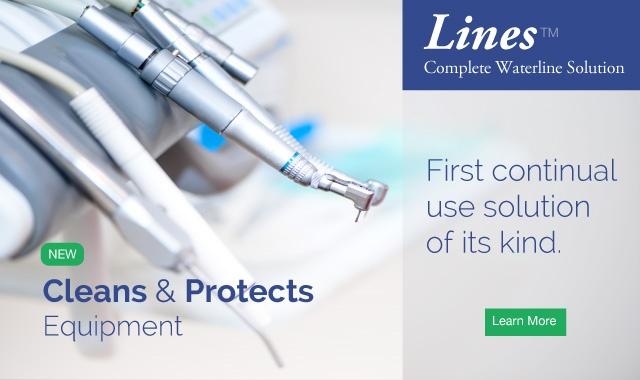How clean are the dental unit waterlines in your office?
Waterlines can be filled with all kinds of dangerous bacteria. In this article some of these bacteria are discussed, as well as methods for preventing their growth.
We have all probably seen at least one news article by now about patients becoming sick, even hospitalized, due to contamination from dental unit waterlines. In a recent news report out of Anaheim, California, a seven-year-old girl, along with nearly two dozen other children, were infected with Mycobacterium abscessus linked to dental unit waterlines after pulpotomy treatments.

Because this bacterium is hard to treat with antibiotics, to combat the infection in this particular seven-year-old, three permanent teeth, one primary tooth and part of her jaw bone had to be removed13. While these outbreaks are rare, no dental office should be taking any chances.
Related article: Oral bacteria linked to risk of pancreatic cancer
We see a number of immunocompromised patients, even if they, or we, aren’t aware of it. This includes children and geriatric patients. Of course patients with organ transplants can be immunocompromised due to their anti-rejection medications, but so can patients taking medications for autoimmune disorders. For example, patients taking medications for psoriasis or Crohn’s disease may be immunocompromised. When a patient is immunocompromised, their immune system simply cannot fight infection and contaminated dental unit waterline water could pose a risk to them. So that begs the question: How clean are the waterlines in your office, and are you doing enough to keep them that way?
Coming up: What do you need for a clean waterline? What could be living in your waterline right now? How do you keep your waterline clean?

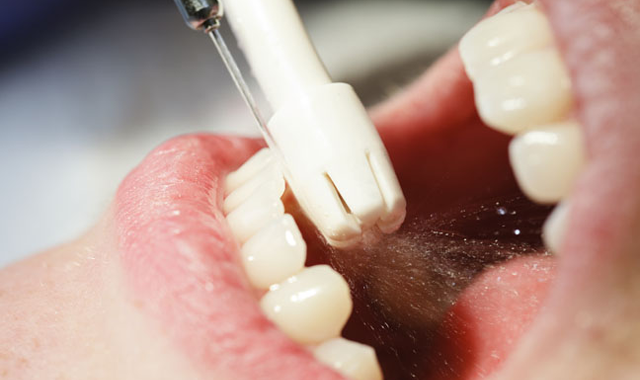
What constitutes a “clean” dental unit waterline?
In 1995, the American Dental Association Board of Trustees and ADA Council on Scientific Affairs put forth a statement in response to scientific evidence that called for the improvement of microbiologic quality of water used in dentistry.1 This statement recommended dental unit waterlines contain “no more than 200 colony-forming units (CFU) of aerobic mesophilic heterotrophic bacteria at any point in time in the unfiltered output of the dental unit."1
In 2003, the Centers for Disease and Prevention (CDC) released its guideline stating, “The number of bacteria in water used as a coolant/irrigant for nonsurgical dental procedures should be as low as reasonably achievable and, at a minimum, ≤500 CFU/mL.” Based on the CDC guidelines, the ADA revised and adopted their statement in 2004.1
Related: Study finds oral bacteria linked to risk of stroke
This CDC recommendation is the same standard set forth by the Environmental Protection Agency (EPA), the American Public Health Association (APHA), and the American Water Works Association (AWWA) to drinking water.11 Put simply, the water in your waterlines should be as clean as drinking water.


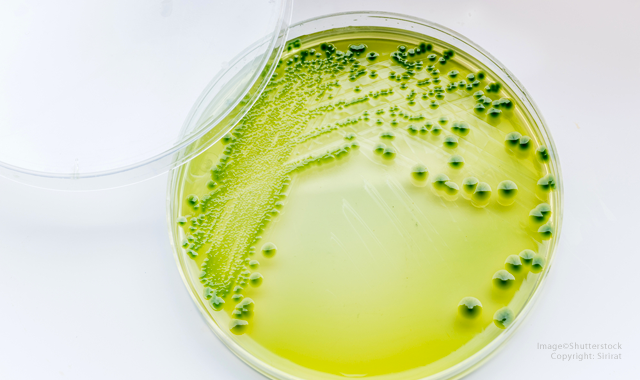
What is lurking in your dental unit waterlines?
According to the CDC, studies have shown that waterlines can become colonized with microorganisms including bacteria, fungi and protozoa.11 The polysaccharide slime layer these microorganisms create in waterlines then serves as a reservoir that can amplify the number of free-floating microorganisms (planktonic) in dental unit waterlines.11 To name a few, Pseudomonas aeruginosa, Legionella species, nontuberculous Mycobacterium species and Staphylococcus aureus have been isolated from dental water systems.11,12
Let’s look at just these named bacteria that have been isolated from dental water systems:
Pseudomonas Aeruginosa is widely found in the environment. For patients with weakened immune systems, this bacterium can lead to infections of the blood and pneumonia, possibly leading to serious illnesses and death. Milder illnesses in healthy patients with exposure through water can lead to ear infections (especially in children), skin rashes and eye infection with the use of extended-wear contacts. This bacterium is treated with antibiotics, but worryingly, 13 percent of Pseudomonas is becoming multidrug-resistant.7
Trending article: 5 infection control mistakes you may be making and not even realize
Legionella is found naturally in freshwater environments but normally not in sufficient levels to cause disease. However, it can become a health concern when it grows in human-made water systems. Legionella grows within amoebae and ciliated protozoa (one-celled organisms) which protects it from chemicals like chlorine. It grows especially well in warm water (think heated dental water).5 It is spread through aerosols and can cause a very serious type of pneumonia, fatal for one in 10 infected. 6
Nontuberculous Mycobacterium is a naturally occurring bacterium found in soil and water. Aerosols from infected water can enter airways and lung tissue leading to disease, especially in immunocompromised patients. Initial treatment requires antibiotics for one to two years. If left untreated it can lead to a progressive lung infection that can become chronic and require ongoing treatment, possibly including the removal of damaged parts of the lung.2,10
Related: Your 13 top scariest dental horror stories
Staphylococcus aureus is a bacterium that normally does not cause harm; 30 percent of people actually carry this bacterium in their nose. However, sometimes these infections are serious or even fatal, especially for an immunocompromised patient. This includes patients with diabetes, cancer, vascular disease, eczema and lung disease. S. aureus can be responsible for serious and even fatal conditions such as bacteremia/sepsis, pneumonia and endocarditis. Staph can also become resistant to antibiotics; drug-resistant staph infections include Methicillin-resistant Staphylococcus aureus (MRSA), Vancomycin-intermediate Staphylococcus aureus (VISA) and Vancomycin-resistant Staphylococcus aureus (VRSA).4


ADVERTISEMENT



Why are dental unit waterlines prone to contamination?
Dental unit waterlines are prone to contamination because they have a low flow rate, undergo long periods of stagnation and the tubing (compared to regular plumbing) has a high surface to volume ratio, among other factors.8
For reference, a family of four uses on average 200 to 300 gallons of water per day. The flow rate of this water can be anywhere from one to 10 gallons per minute. In comparison, a dental operatory uses on average only 0.25 to two liters of water per day with the flow rate being about 30-50 mL per minute.8 Most dental tubing has a diameter of 1/16 of an inch, where household plumbing has a diameter of 1/2 of an inch. The flow rate of water for household plumbing is 1,000 times greater than that of dental unit water.9 This low flow rate, stagnation and high surface area to volume leaves biofilm relatively undisrupted. This means it is left to colonize and multiply.
Trending now: 2016 Annual State of Dental Hygiene Survey: Part 1
Beyond patient risks, is this a risk to a clinician?
Considering the aerosols produced during the treatment hygienists render, including ultrasonic scaling and polishing, the cleanliness of waterlines not only affects patients, but clinicians. Serological studies of dental staff have shown that 34 percent carry the antibodies to Legionella bacteria, meaning they’ve been exposed. In comparison, only five percent of control groups carry the same antibodies.14
In 1995, a California dentist’s death may have been due to Legionella. After the dentist’s death, water samples were taken from his home water supply and his operatory. Legionella was found in high levels (>10,000 organisms per mL) in his dental units and low levels (<100 organisms per mL) in his home water. Though not definitive, there was high likelihood the contamination of his dental unit waterlines, and the aerosols created, may have been the source of his infection.3
In 1998, a Washington hygienist accidentally splashed water from her ultrasonic scaler into her eye. Within a week her eye became seriously infected. After extensive antibiotic treatment, she recovered. However, she has ongoing reoccurrences of the infection. This infection was caused by a pathogenic Serratia bacteria, a fecal bacteria.9 Yes, fecal bacteria from a dental unit waterline! The cause? Poor maintenance of the waterlines and inattention to the supply tubing.9
Does this mean you are going to get sick? If you are healthy, probably not. However, the fact still remains that dental professionals can be chronically exposed to contaminated aerosols from dental unit waterlines and a risk is present if they are not maintained properly.


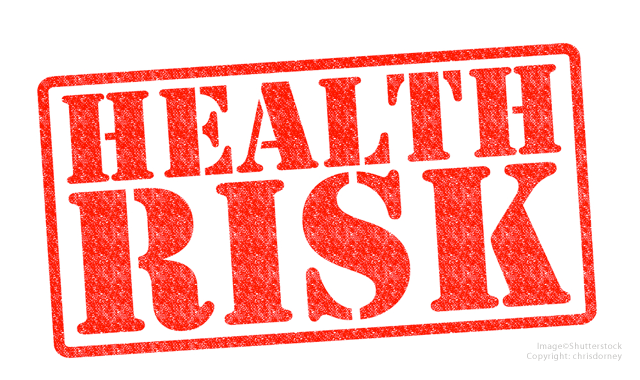
What can you do?
Daily, weekly and monthly waterline treatment protocols are a must, paying special attention to the instructions of water treatment products you use and abiding by all steps. Bacteria grows quickly and exponentially: they can double their population every 20 minutes in a warm environment.9 For instance, let’s say there’s one bacterium in the waterline at 8 a.m.; by noon this number is 4,096, and by 5 p.m. there are 134,217,728 bacteria present.9 Just think of what the bacterial count would be overnight when the water is absolutely stagnant, or even over the weekend!
The CDC states, “Dental devices that are connected to the dental water system and that enter the patient’s mouth (handpieces, ultrasonic scalers, air/water syringes) should be operated to discharge water and air for a minimum of 20-30 seconds after each patient."11 This is so patient material that may have entered the turbine, air or waterline can be physically flushed. The CDC previously recommended that waterlines be flushed at the beginning of the day to reduce the bacterial load, but studies have shown this doesn’t actually affect biofilm or improve water quality.11
Trending now: 5 more infection control mistakes you might not realize you're making
When it comes to the chemical treatment of dental unit waterlines, many dental offices are good at the daily and weekly “maintenance” of waterlines; however, the recommended “shocking” of lines is often forgotten. Shocking is important to clean the lines, so maintenance can then keep bacterial counts down.
Water testing is also important. Water can be tested using in-office tests or sent to a lab. In-office tests aren’t entirely accurate, but they can give an office a general idea of if there is a potential problem, and are better than nothing.9 The CDC recommends testing and monitoring water quality, however they don’t give a specific timeframe.11
When cleaning waterlines, make sure all tubing in the operatory is flushed using a cleaning product. The quick disconnect to the ultrasonic is often overlooked, and can be one of the dirtiest areas in a hygienist’s operatory. Worried about your quick disconnect being problematic? A dental unit service tech can make a new quick disconnect easily.
Another problem area in a hygiene operatory is the tubing connecting the slow speed handpiece. An easy fix is to have a dental unit service tech insert a set screw into the control block to stop the entry of water. Yet another source of bacterial growth is water heaters for patient water. Warm water is a catalyst for growth of bacteria. So while patients like having warm water during treatment, it speeds up the growth of bacteria in dental unit waterlines. Lastly, don’t think if you have an independent water bottle system (not hooked up to city water, which is actually quite clean), your waterlines aren’t prone to bacterial growth. These can actually be incubators for bacterial growth.9


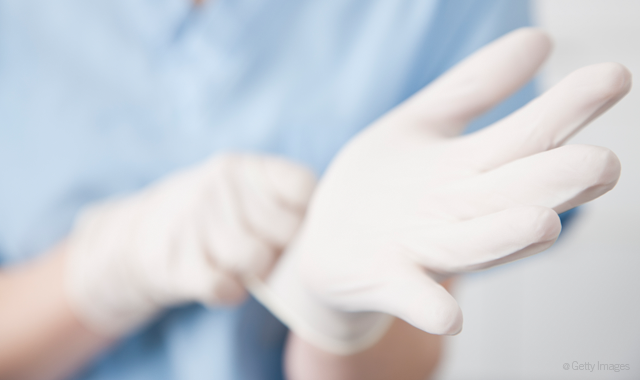
When choosing a product
When choosing products to disinfect visible surfaces, we pay close attention to the efficacy of the product and how harmful they can be to those surfaces. We should be doing the same for the products we use for dental unit waterlines. Overly acidic or basic products can corrode the dental unit control block and lines. We must also remember that we as clinicians, our patients and the environment (especially aquatic wildlife) are exposed to the chemicals we use, so we should be using products that are both people- and environmentally-friendly. For instance, bleach-based products can not only corrode expensive dental equipment, but can emit chloroform.9 Don’t hesitate to read the MSDS sheet for the product you are using and ask yourself if it’s something you are okay with exposing yourself, your patients and the environment to.
Closing
While the risk for infection from dental unit waterlines is low, it is in the best interest of both the clinician and patients that we treat to maintain and test the quality of dental water. Our patients trust we are following proper infection control protocols when it comes to sterility of instruments, patient care items and surfaces; we should be doing the same for dental unit waterlines.

References
1) American Dental Association. (2016, Aug). Dental Unit Waterlines. Retrieved from http://www.ada.org/en/member-center/oral-health-topics/dental-unit-waterlines
2) American Lung Association. (2016). Learn about Nontuberculous Mycobacteria. Retrieved from http://www.lung.org/lung-health-and-diseases/lung-disease-lookup/nontuberculosis-mycobacteria/learn-about-ntm.html?referrer=https://www.google.com/
3) Atas, R.M., et. al. (1995, Jan). Legionella Contamination of Dental Unit Waters. Applied and Environmental Microbiology, Apr. 1995, p. 1208–1213. Retrieved from https://www.ncbi.nlm.nih.gov/pmc/articles/PMC167375/pdf/611208.pdf
4) Centers for Disease Control and Prevention. (2011, Jan). Staphylococcus aureus in Healthcare Settings. Retrieved from http://www.cdc.gov/HAI/organisms/staph.html
5) Centers for Disease Control and Prevention. (2016, June). Legionella (Legionnaires’ Disease and Pontiac Fever). Retrieved from http://www.cdc.gov/legionella/clinicians/disease-specifics.html
6) Centers for Disease Control and Prevention. (2016, July). Legionnaires’ Disease. Retrieved from http://www.cdc.gov/legionella/downloads/fs-legionnaires.pdf
7) Center for Disease Control and Prevention. (2014, May). Health-care Associated Infections: Pseudomonas aeruginosa in Healthcare Settings. Retrieved from http://www.cdc.gov/HAI/organisms/pseudomonas.html
8) Chandler, J. (2002). Dental Waterlines: Understanding and Controlling Biofilms and Other Contaminants. Retrieved from https://www.hu-friedy.com/products/index.php/mastercontrol/index/file/id/68
9) Dean Swift, B.Sc. B.Ed. FADM. If We Had Only Known… Reactions to Dental Waterline Contamination PDF and personal communication.
10) Ioachimescu, O.C., Tomford, J.W. (2010, Aug). Nontuberculous Mycobacterial Disorders. Retrieved from http://www.clevelandclinicmeded.com/medicalpubs/diseasemanagement/infectious-disease/nontuberculous-mycobacterial-disorders/
11) Kohn, W.G., Collins, A.S., Cleveland, J.L., Harte, J.A., Eklunt, K.J., Malvitz, D.M. Center for Disease Control and Prevention. Guidelines for Infection Control in Dental Health-Care Settings – 2003. MMWR 2003; 52 (Report No. 17). Retrieved from http://www.cdc.gov/mmwr/PDF/rr/rr5217.pdf
12) O’Donnell, M.J., et. al. (2011, Oct). Management of Dental Unit Waterline Biofilms in the 21st Century. Future Microbiol. 2011 Oct;6(10):1209-26. doi: 10.2217/fmb.11.104. Retrieved from https://www.ncbi.nlm.nih.gov/pubmed/22004039
13) Ross, E. (2016, Sept 30). Infection Outbreak Shines Light on Water Risks at Dentists Offices. Retrieved from http://www.npr.org/sections/health-shots/2016/09/30/495802487/infection-outbreak-shines-light-on-water-risks-at-dentists-offices
14) Szymanska, J. (2004). Risk of Exposure to Legionella in Dental Practice. Ann Agric Environ Med 2004, 11, 9–12. Retrieved from http://www.aaem.pl/pdf/11009.pdf
